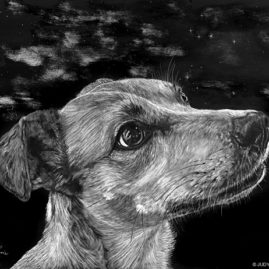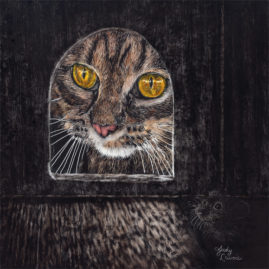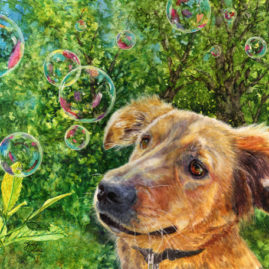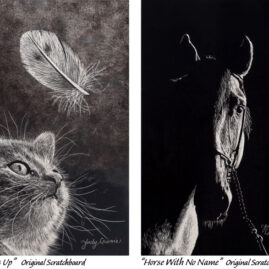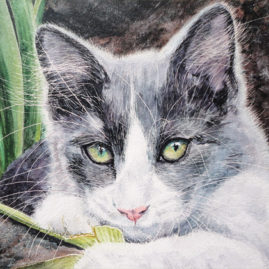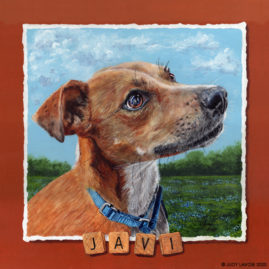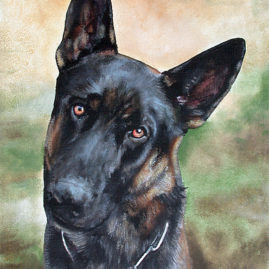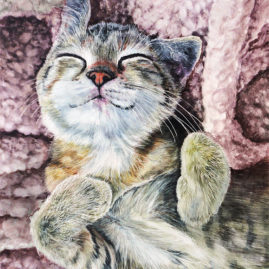-
MEDIUM: Watercolor on Aquabord™ with Scratching
-
SIZE: 14" x 11"
-
STATUS: For sale $900, in a deep black floater frame
-
ACCOLADES: Richard Mills, juror for the 54th Annual Oak Ridge (TN) Open Show gave it the following critique: “The eye is very well drawn with unbelievably rendered hair. The placement in the center is just a bit off-putting. You could create more tension and interest with an off-set placement…”
"I've always considered the eyes as the most important part of a portrait, whether I am painting an animal or a human. Eyes become the natural focal point, drawing the viewer to look there first. Eyes give the painting life. So why not paint just an eye?
Both of my sweet dogs posed for many photos, but this image won out as the best reference for a painting. My dog Watson, adopted from the shelter several years ago, looks like a small pale Yellow Labrador Retriever, with very light colored fur on his face. His eyes are intense and surrounded by various colors of fur and hair. I had photographed him on the porch, so the nearby trees were reflected in his eye. The prospect of depicting this in a painting was a challenge I was anxious to take on.
I chose white Aquabord™ as my painting surface, knowing its unique characteristics would allow me to create the wonderful details in the fur and the eye itself. This is much larger than life, 14" x 11", which I felt would make it very dynamic. I was careful to leave the unpainted white background untouched which would increase the contrast with the darks of the eyeball itself.
I used watercolors for this painting, selecting a palette of earthy colors, with cadmium yellow used to mix the brighter greens. I tried to let simple brush strokes define the direction and softness of the fur, making it look less in focus the further it was from the eye. The scratching properties of Aquabord allowed me to add the most dramatic details to this painting, the highlights in the eyeball and the white eyelashes and fur. Since these hairs were so fine as they would be in a smaller painting, I used a Speedball scratching nib to scratch most of the white lines. This makes a wider line than a fine point of an x-acto blade. In most of these scratches, I also went over them with a fine pointed fiberglass scratching tool, softening the edges. Watson approves, so this painting passed my 'Lab' test!"

